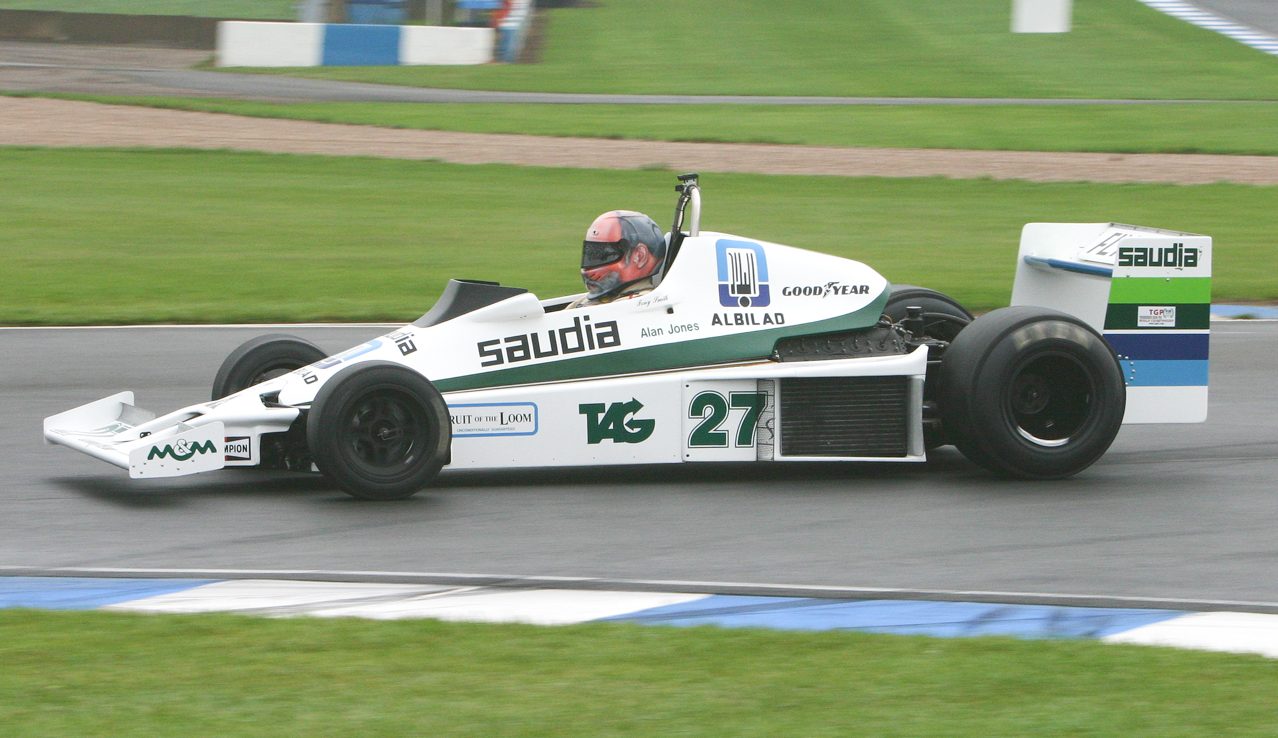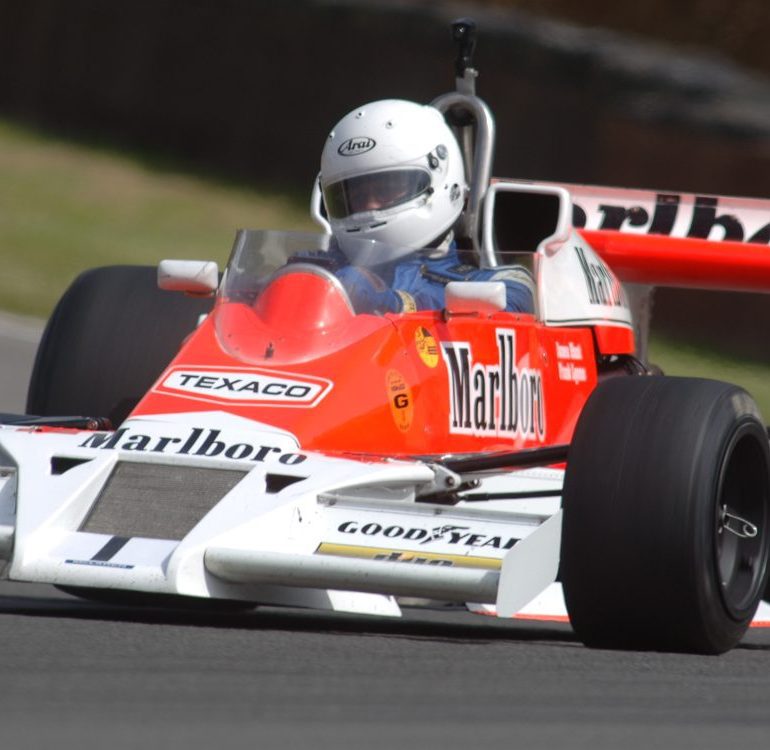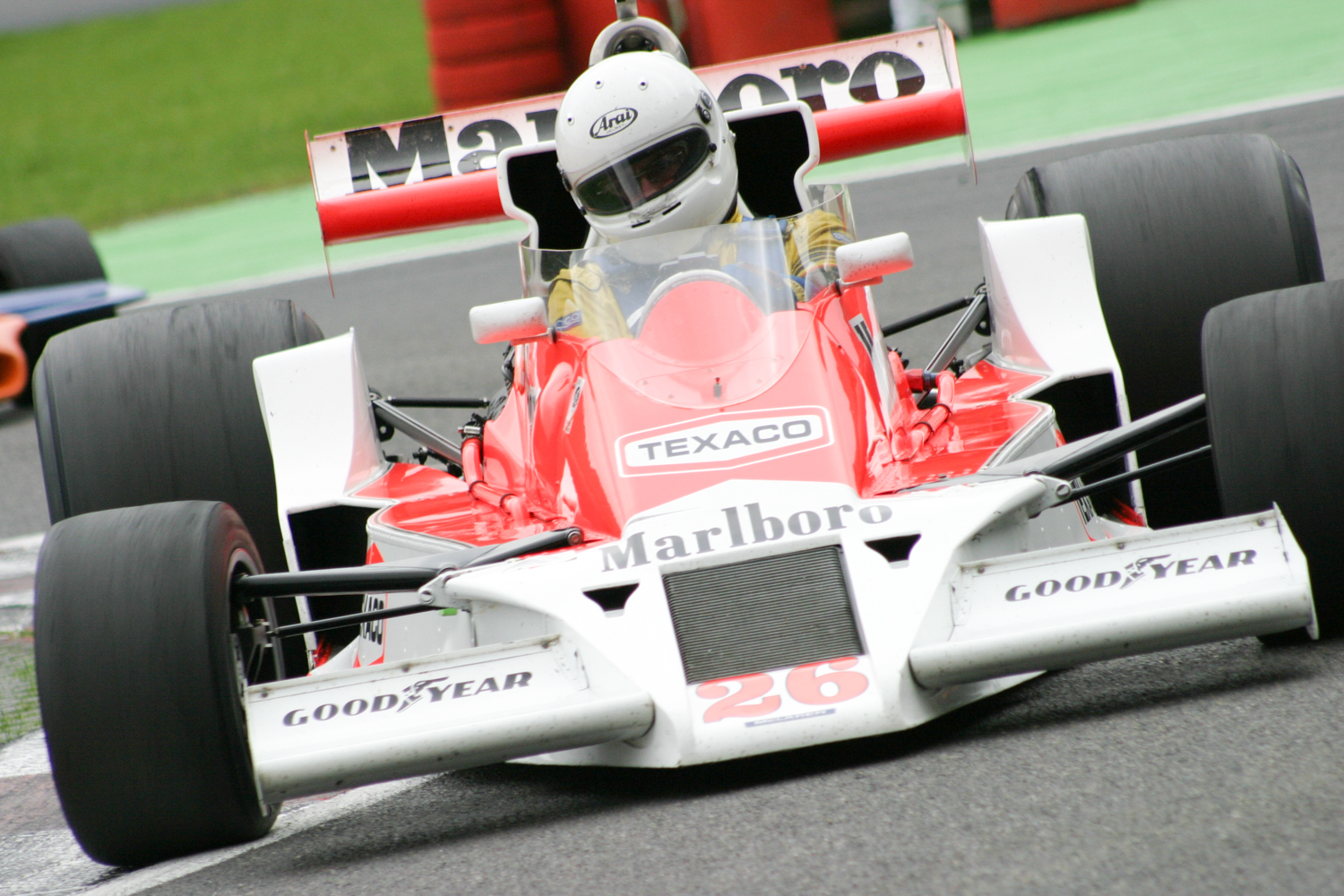After some 50 years of automobile racing, the Grand Prix Formula, or Formula One, was created by the FIA (Federation Internationale de L’Automobile) in 1950, with its first race the British Grand Prix at Silverstone. This was to be the first World Drivers Championship, in the world’s most technically advanced single-seater racing cars. In 1958 the World Constructors Championship was added so that all would at last know who the best driver in the world was as well as which manufacturer had constructed the best car. This guide will cover the period of 1966-1983 for cars built to a 500 kilograms to 585 kilograms weight minimum, and powered by 3.0-liter normally aspirated engines.
Formula One started from very humble beginnings.,with teams comprised of groups of talented people working out of small garages, trying to find the money to go racing. During this time the miracle of the racing sponsor was created, and teams grew in size. Great inventions were designed, such as the Cosworth DFV engine, the slick racing tire, aerodynamic aids ranging from simple wings to full ground-effects. This was when the English racing car industry’s constructors relied heavily on Cosworth engines and Hewland gearboxes. World Champion drivers included Andretti, Brabham, Fittipaldi, Hill, Hulme, Hunt, Jones, Lauda, Piquet, Rindt, Rosberg, Scheckter and Stewart.
Historic Formula One races are run by Masters Historic Racing for cars that ran from 1966-1983 with 3.0-liter normally aspirated non-turbo engines and no sliding skirts. Masters organizes championships in both Europe and North America.
1977 McLaren M26
McLaren Cars of Woking, Surrey, England was founded in 1966 by New Zealander Bruce McLaren. The team’s first Grand Prix car, the M2B, was raced that year. By 1974, the M23, designed by Gordon Coppuck, was an F1 front-runner and the car to beat from 1973 to 1976. The M23 won the World Championship in 1974 with Emerson Fittipaldi and in 1976 with James Hunt. What masterpiece would Coppuck design to replace the successful M23? Coppuck designed the M26. It had an aluminum honeycomb monocoque construction, a low air box, in-board rear brakes and suspension. It was still Cosworth DFV powered, mated to a Hewland FG 6-speed gearbox. It was lower, more aerodynamic and looked striking in its red and white Marlboro livery, plus Hunt carried the number one plate on his M26 in the 1977 season. With development it soon became a Grand Prix winner and proved quicker than the M23, but it was not overnight. Hunt won three Grand Prix races in 1977 and looked set to win two more when reliability issues caused him to drop out of the lead. The M26 was developing into a true championship contender. For 1978, the Lotus 79 with its ground effects design proved to be the quickest car and all teams were scrambling to design a ground effects car. This ended an era. The M26 is the last “non” ground effects McLaren and the ideal car for running today in the Historic Grand Prix series. It is also eligible for the Monaco Historic Grand Prix which accepts only pre-ground effects cars. The mid-1970s was a winning era for McLaren and an M26 is one of the best cars of that time.
1978 Williams Cosworth FW06

Frank Williams, one of Grand Prix racing’s most successful constructors started from humble beginnings. He first entered Grand Prix racing, in 1969, with a Brabham BT26 for Piers Courage to drive. This was followed, in 1970, by a Dallara-designed Detomaso Ford, in 1971 and 1972 March Fords, and in 1973 an Iso-Rivolta sponsored by Marlboro. These Iso-Marlboro cars were entered in 1975 as Williams-Fords ushering in the FW car designation. In 1976, William acquired the Hesketh 308C and, partnered with Water Wolf, badged them the FWO5. In 1977, he went back to March. For 1978, a young designer who had been with Lola, Patrick Head, was hired. Head designed the Williams Cosworth FW06, his first car of his own design. This wedge-shaped design did not follow the wing car concept of Lotus. Sponsorship came from Saudia Airlines and Albilad. The driver was Australian Alan Jones, who was immediately competitive. Williams’ Grand Prix Engineering was off and running and soon to win a world championship with the FW07 Series. The FW06 was the first true Williams-Head collaboration.
Criteria Used For Assessing Valuations for this Guide:
- Degree of Originality
- Overall Condition, Restoration
- Technology, Design, Coachbuilder
- Production Numbers/Rarity
- Competition History
- Ownership History, Documentation
- Modern Event Eligibility
Regional Variances
The prices stated in this guide are based on U.S. values. The values of historic racing cars can vary as much as 25%-35% in other countries, depending on local market appeal, currency rates, import duties, and VAT. Most of the time, we are able to document known sales or closed escrows, as they say in real estate. When this is not possible, a logical estimate of the car’s value is given, based on its sales history and relationship to cars of its type.
The prices stated in this guide are based on U.S. values. The values of historic racing cars can vary as much as 25%-35% in other countries, depending on local market appeal, currency rates, import duties, and VAT.
LEVEL |
VALUATION CATEGORIES |
|---|---|
I |
The best combination of all criteria. |
II |
Satisfies mid-range of criteria. |
III |
In need of restoration. Meets only a few points of criteria |





